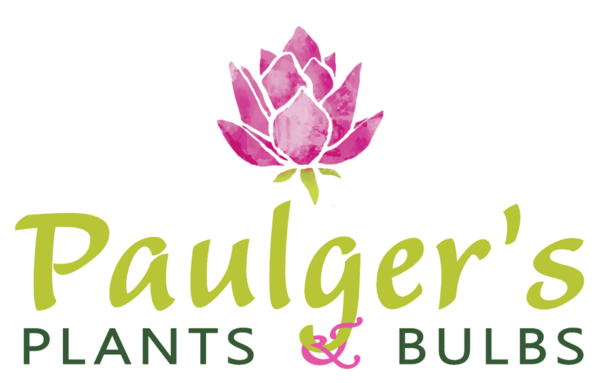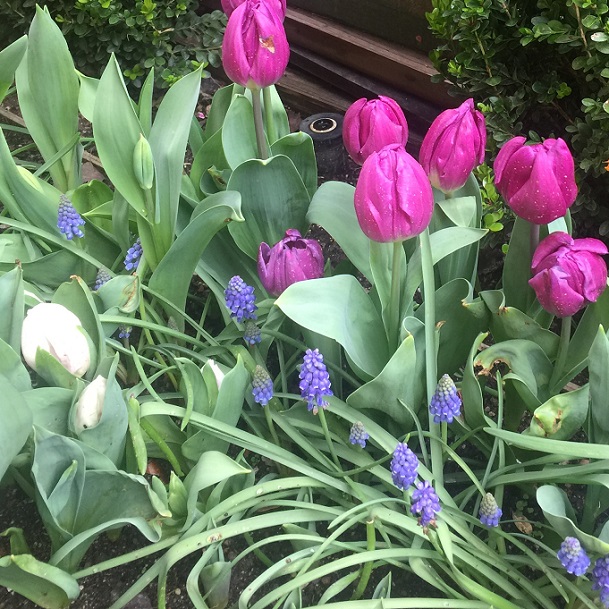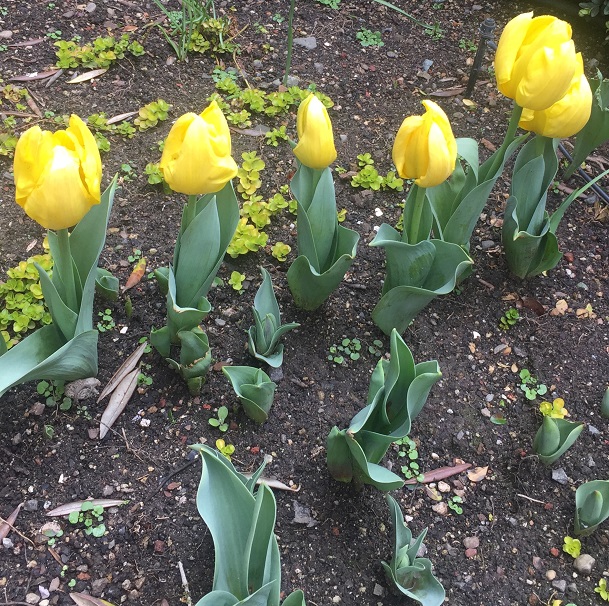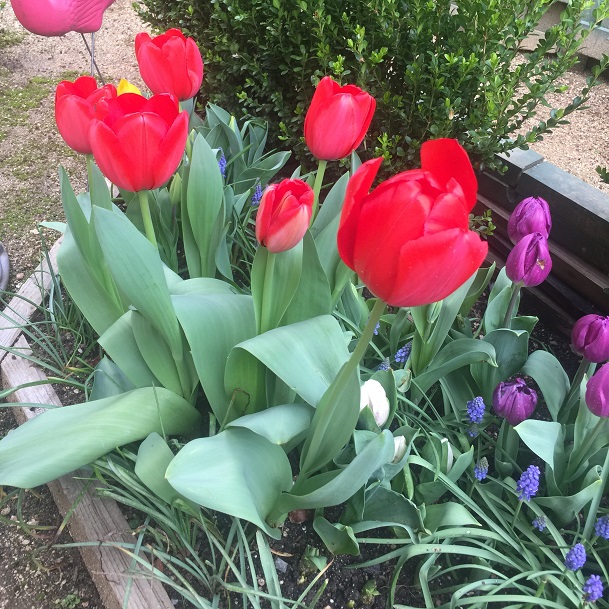Spring 2018 Tulip & Daffodil Trials
Trial Notes
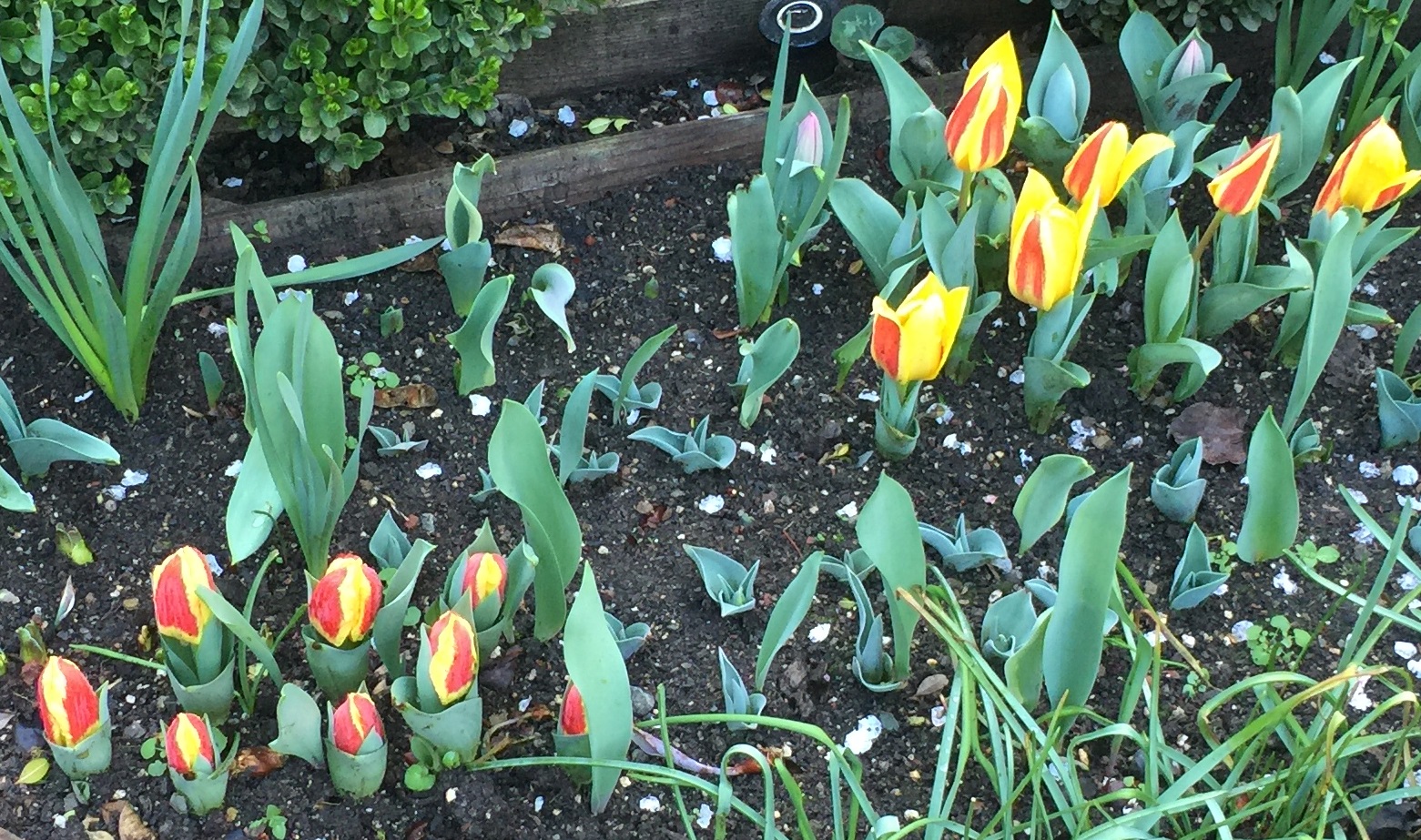
I’ve been planting tulips and daffodil bulbs in my Marin County trial garden every December for almost twelve years. The garden is designed to have a variety of sun exposure, from all day to only late afternoon sun. The plants come into flower in the months of February through April, a time when temperatures have the potential to climb into the 70s and low 80s; but these are also Northern California’s rainy months, and at times, like the past week, means we also experience occasional hail and gale force winds. It has been a difficult weather season. February warm and dry weather caused some heat stress in several varieties.
In my annual trials, I strive to determine earliness to flower, number of days in flower, and wind/rain/heat tolerance. I planted using deeper beds the last few years and used only pre-cooled bulbs, planted in cool and mostly dry conditions during the first week of December.
Please feel free to contact me to see which particular variety you are interested in, and I’ll give you exact details as to the growing conditions and life cycle of the blooms in this year’s trials. Click HERE to see the varieties included in the 2018 trials.
TULIPS

Of the thirty tulip varieties, those that made the biggest impact in my garden were the Kikomacki, the Purple Prince and the Stressa.
The Kikomacki, a yellow mid-season tulip withstood our torrential March downpours and wind gusts. This Triumph tulip flowered evenly, in perfect timing with JetfireDaffodil (see below). The Kikomacki is a single early variety with a medium sized flower and a 14” sturdy stem. It came into bloom during the week of February 19th and the color has remained strong throughout March. It grew well in all the sun conditions it was planted, which was also a pleasant surprise! Though it is a single early Tuli, the Purple Prince is also able to withstand stormy weather and it has retained it’s deep violet color, even after our Spring gales. With their sturdiness and lasting color, the Purple Prince makes a great addition to a quintessentially Spring bouquet.
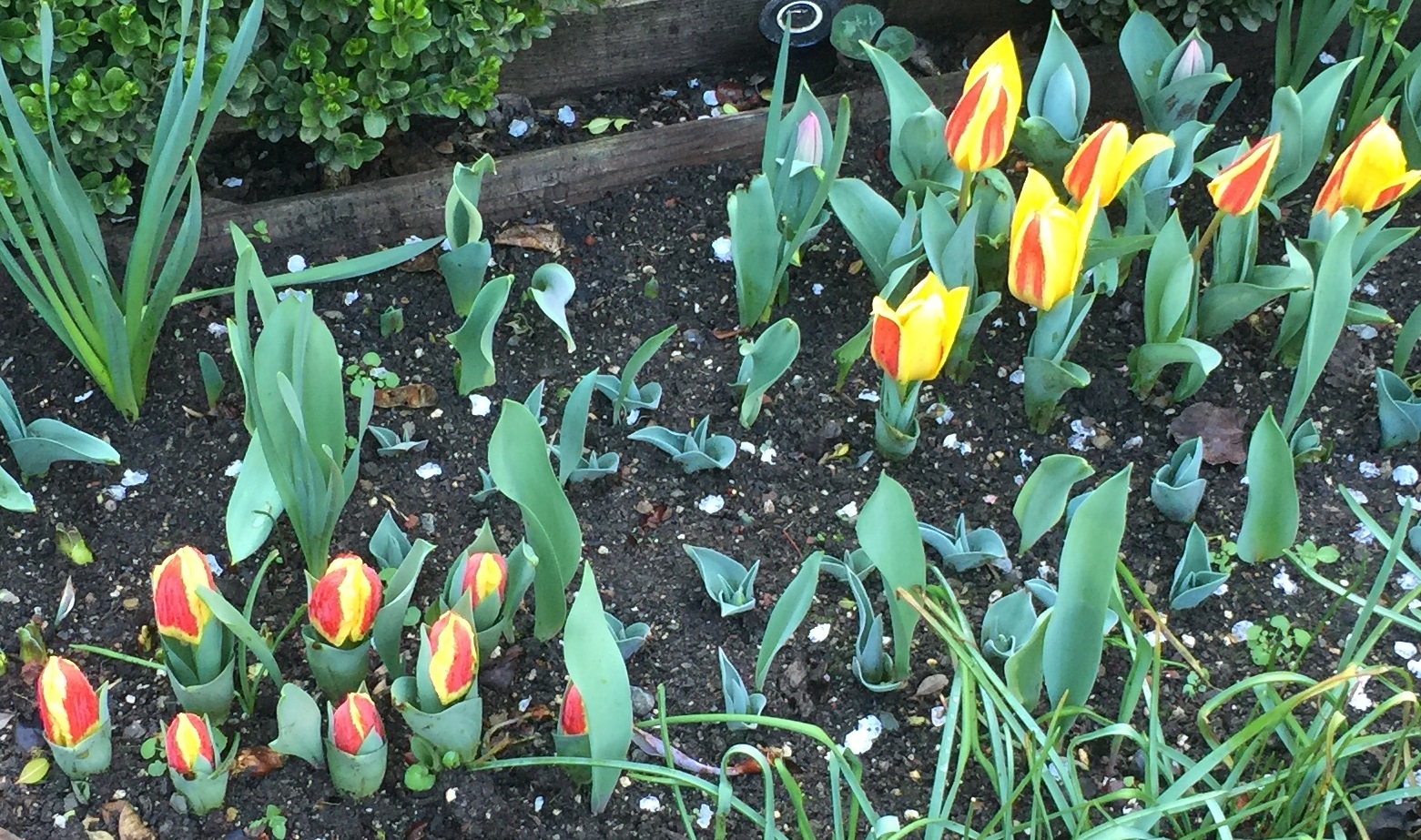 Another tulip worth a mention is the Stresa, which you see on the far left, next to the United States, which blooms 3 to 5 days earlier and stands taller, as seen in the photograph of our trial garden. The Stresa, a Kaumanniana, is a chameleon of sorts, since it appears more scarlet in the morning and evening, but opens to reveal a more yellow interior in the afternoon sun, so the two are mostly indistinguishable. This shorter variety reaches just 8″-10″ and plants well with the crocus. The Stresa does exceptionally well in full bloom and, because of it’s shorter stature, holds up well in the wind and rain. It’s also a nice alternative to the United States, which can be a little harder to find. It prefers cooler, wet winters and dry summers if grown in well-ventilated soil.
Another tulip worth a mention is the Stresa, which you see on the far left, next to the United States, which blooms 3 to 5 days earlier and stands taller, as seen in the photograph of our trial garden. The Stresa, a Kaumanniana, is a chameleon of sorts, since it appears more scarlet in the morning and evening, but opens to reveal a more yellow interior in the afternoon sun, so the two are mostly indistinguishable. This shorter variety reaches just 8″-10″ and plants well with the crocus. The Stresa does exceptionally well in full bloom and, because of it’s shorter stature, holds up well in the wind and rain. It’s also a nice alternative to the United States, which can be a little harder to find. It prefers cooler, wet winters and dry summers if grown in well-ventilated soil.
DAFFODILS
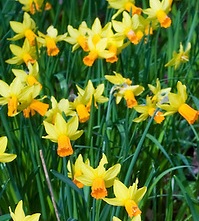 I focused the daffodil trials on less expensive and smaller bulbs, to see the capacity for mass plantings in close space. The first was the Jetfire, a Cyclamineus, mid-season bloomer, with 12-14″ stems. This multiple secondary daffodil bloomed the week of February 17 and is still thriving five weeks later. This firey daffodil is best for mass plantings in close spacing.
I focused the daffodil trials on less expensive and smaller bulbs, to see the capacity for mass plantings in close space. The first was the Jetfire, a Cyclamineus, mid-season bloomer, with 12-14″ stems. This multiple secondary daffodil bloomed the week of February 17 and is still thriving five weeks later. This firey daffodil is best for mass plantings in close spacing.
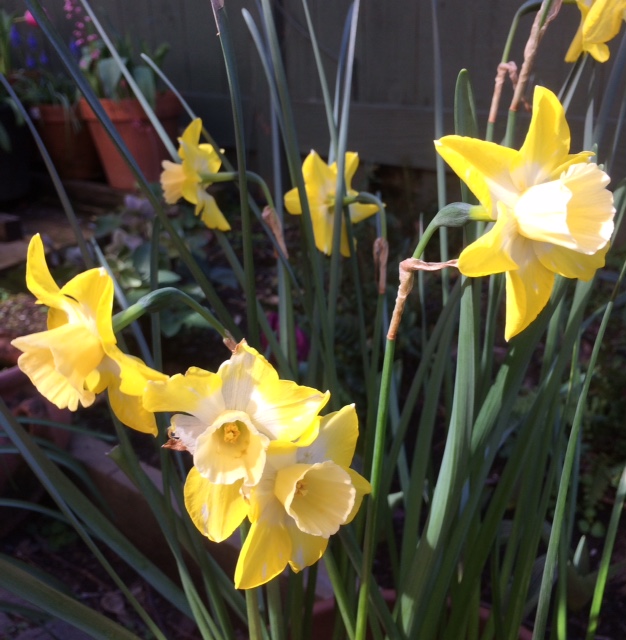 the Pipit, a Janquilla daffodil, is a vigorous mid-season bulb known for its long lasting flowers. The Pipit was in flower from March 4 and is still in full bloom, though the color seems a bit more faded than those that were less exposed to full sunlight. These hardy and large long-lasting flowers had the color power to be seen over a long distance in the garden. They do well in various environments, including pots and beds. Both varieties offer lovely variety to spring gardens.
the Pipit, a Janquilla daffodil, is a vigorous mid-season bulb known for its long lasting flowers. The Pipit was in flower from March 4 and is still in full bloom, though the color seems a bit more faded than those that were less exposed to full sunlight. These hardy and large long-lasting flowers had the color power to be seen over a long distance in the garden. They do well in various environments, including pots and beds. Both varieties offer lovely variety to spring gardens.
Below are the honorable mentions from this year’s Trial Garden.
Name and name?
name and name?
name and name?
